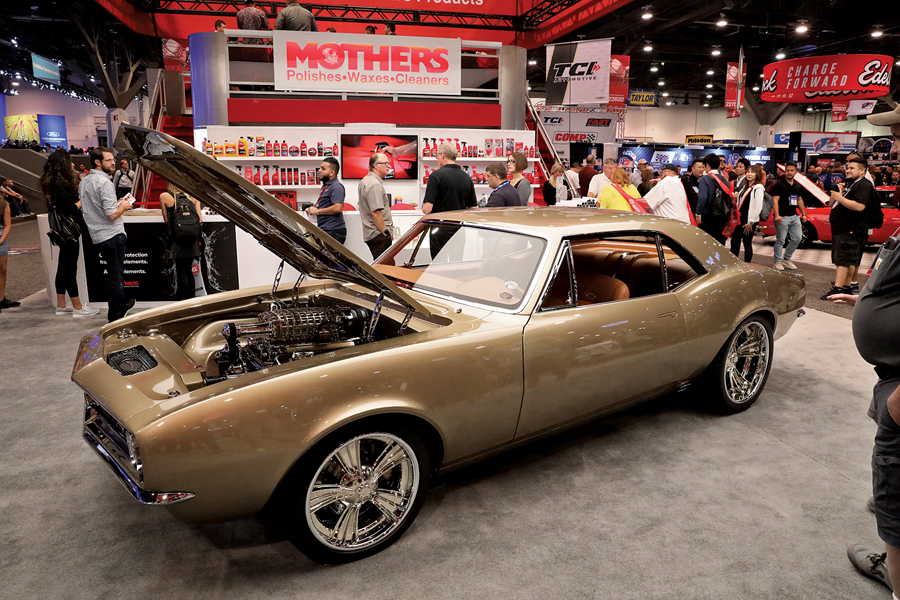
I wouldn’t consider myself to be a car traditionalist. I love American muscle in every form. But here at ACC, we understand that rare muscle should stay in its prime, untouched form. A ’69 GTO Judge should stay Carousel Red, which is really orange, and it should be carbureted. A ’70 Boss 302 should sit on Magnum 500s. A Road Runner should have rubber mats and a pistol grip.
When an owner has something rare or inherently valuable — such as that Judge, Boss or Mopar — leaving it stock makes sense. But what about the also-rans — the Tempests, base Mustangs and plain-Jane Satellites? Is a ratty, common, base-model Corvette interesting enough to keep around in its original form, or should an owner feel free to modify it with today’s parts?
I’m not sure there’s a right or wrong answer here, but it’s worth pointing out that the Beach Boys never sang about turbos, and what would Ronnie Sox — “Mr. 4-speed” — do with two extra gears, anyway?
Weaker muscle
And yet a new resto-mod trend has taken hold. Technology has swooped into our muscle-car world, but it’s easy to understand why.
In 2020, 500-plus-horsepower muscle is common. A Toyota Camry has 300 hp. That may not mean anything to the concours crowd, but to everyone else, original muscle’s excitement has weakened.
If you’re willing to modify your old car, the aftermarket delivers fuel injection, big brakes, suspension improvements and the like. Your GTO can be the supercar you’ve always imagined it to be — just grab your checkbook and your tools.
None of that is news. What is news, however, are climbing values. In spite of traditionalists’ views, top-level resto-mod prices have exploded at auction over the past year.
The prices are a surprise, but it’s not like these cars are fundamentally new to the market. They’ve flown high before, in the early 2000s, until the housing crash and Great Recession saw prices fall like a rock. A lot of market analysts predicted that they’d never recover. At that point, customs became the kick-dogs of the stock-is-best types.
But here we are, seeing big numbers once again for the best of what the aftermarket has to offer. There’s one major difference, though — a lot of today’s resto-mods are built with more respect given to a car’s original design, trim and colors than they were in the early 2000s, and they’re therefore more palatable to traditionalists.
Still, I think rising values tell us less about the cars and more about their buyers.
Better cars
Maybe that new 300-hp Camry is to blame, but I think the roots of wanting more out of our special cars go back farther, all the way into the 1970s and ’80s with the billet-and-tweed street rod scene. The writing was on the wall as soon as hot-rodders started wanting automatic transmissions and air conditioning in their cars. Bias-ply tires and drum brakes offer a unique experience, but it’s really only useful for seeing how far we’ve come.
It ultimately all boils down to use — or ease of use — and while ACC is valuation-based at its core, I’ve taken a broad view of what value really means when it comes to old cars.
It’s about dollars, but it’s also about value per dollar. If a buyer wants a Chevelle to drive — to actually drive — what makes more sense? $50k for a resto-mod with an LS, overdrive and big brakes, or $50k for a 138-code SS 396 with a 4150 Holley, drum brakes, a TH400 and an older restoration?
That answer used to be simple if resale value was of concern. But with resto-mod prices on the rise and real-world usability and changing buyer demographics all factored in, things get muddy.
New trends
I don’t think resto-mods are a flavor of the month. That said, I’m not going to suggest that the future of our market falls completely to them, or to stock restorations. Don’t sell one just to get the other.
As we move forward, there will be a place for both in the greater market and in the pages of this magazine. I do think, however, that we’re going to see resto-mods become even more subtle in how they’re done — with hidden changes designed to make them more reliable, tunable, safer, and more fun to drive in the modern world without losing original character. Much of ACC’s “Wrenching” content focuses on this, including this month’s charging-system upgrade on p. 34.
Cars like that are key in bringing a new generation of buyer into this world — a generation that grew up on reliable econoboxes and that loves seeing big-power muscle destroy tires on Instagram — the same way we did while cruising the main drag as kids.
After all, if the Beach Boys had spooled-up LS engines, they’d have sung about boost, and Sox would have rowed through all six given the chance.